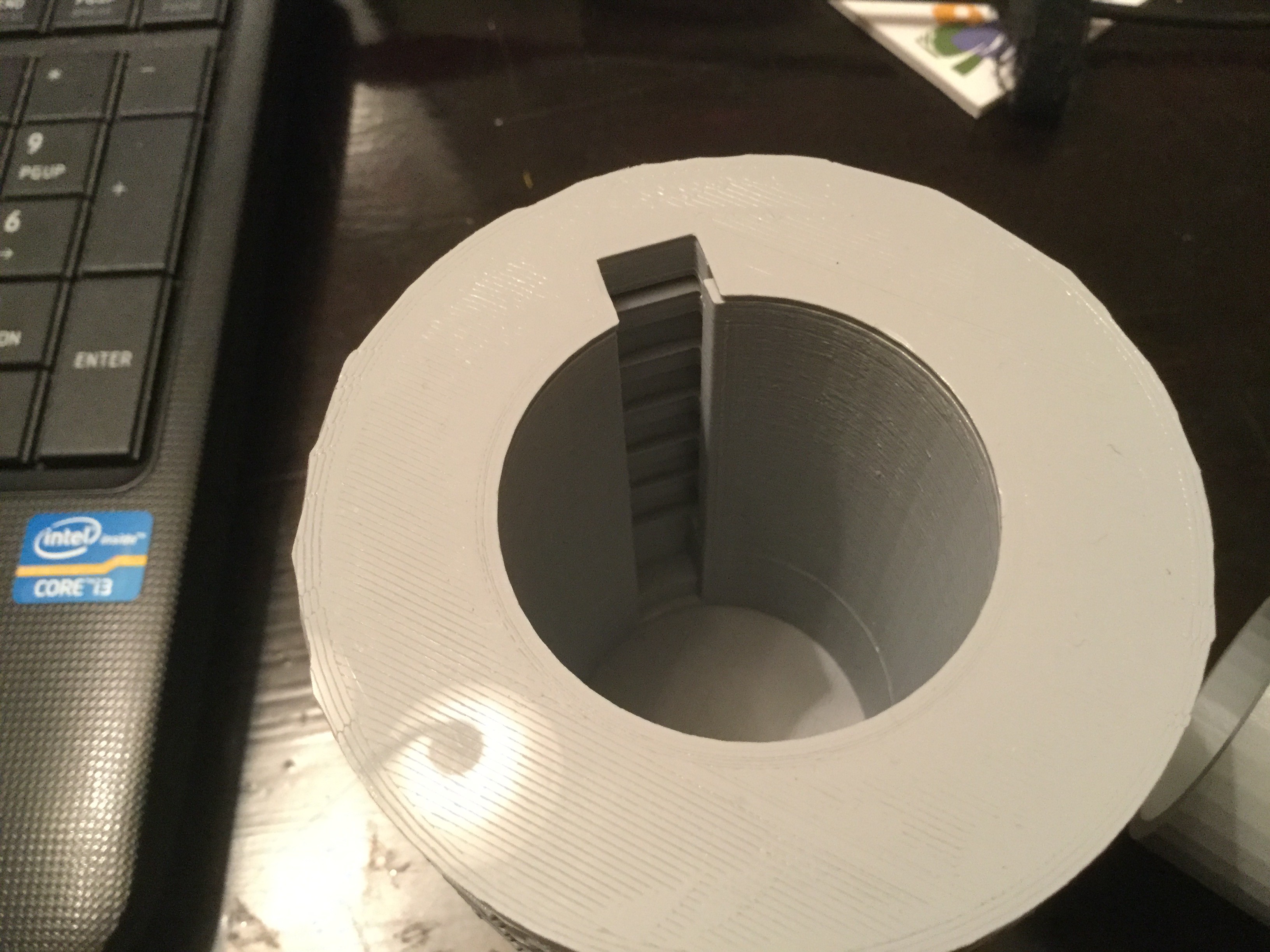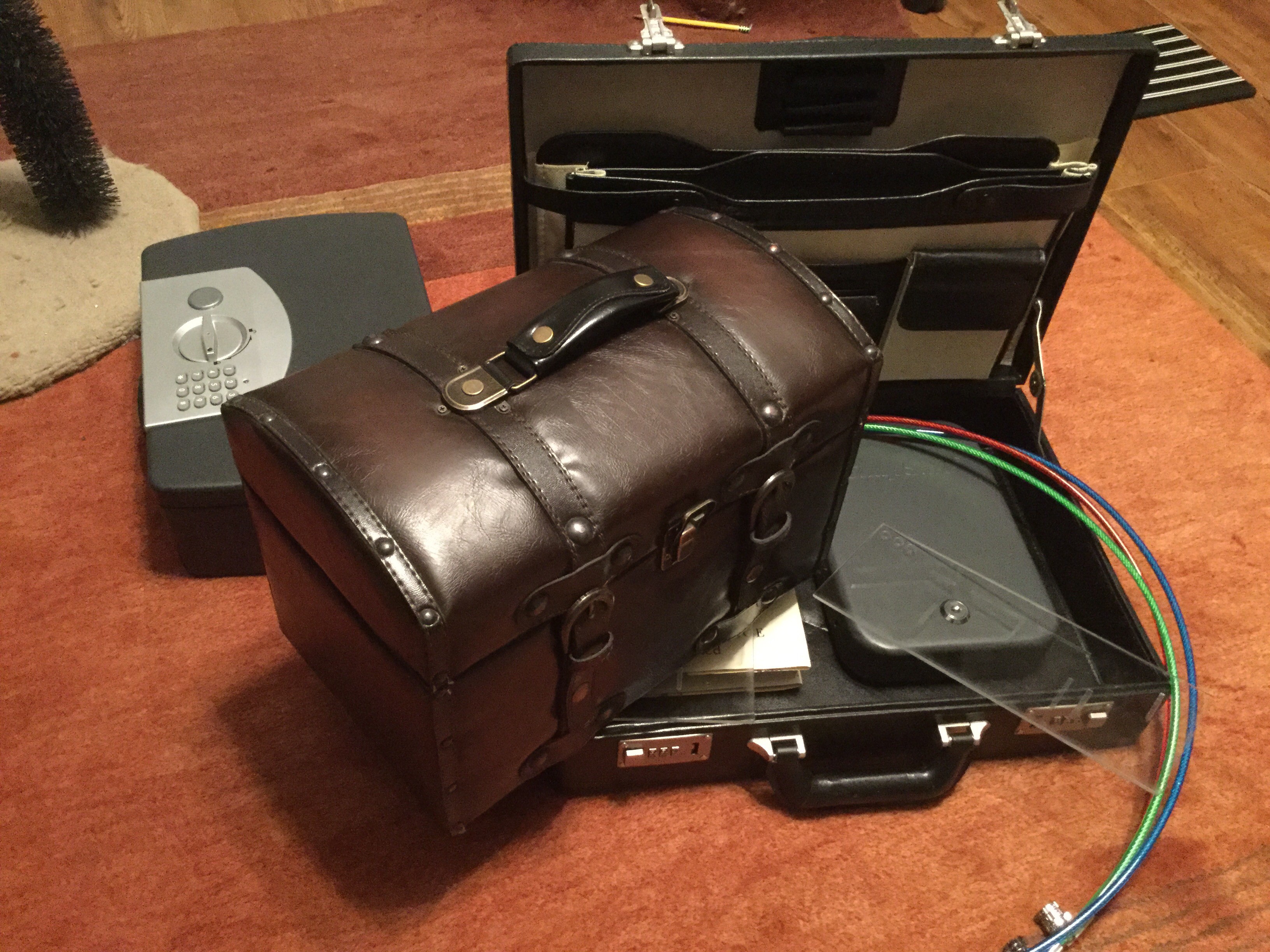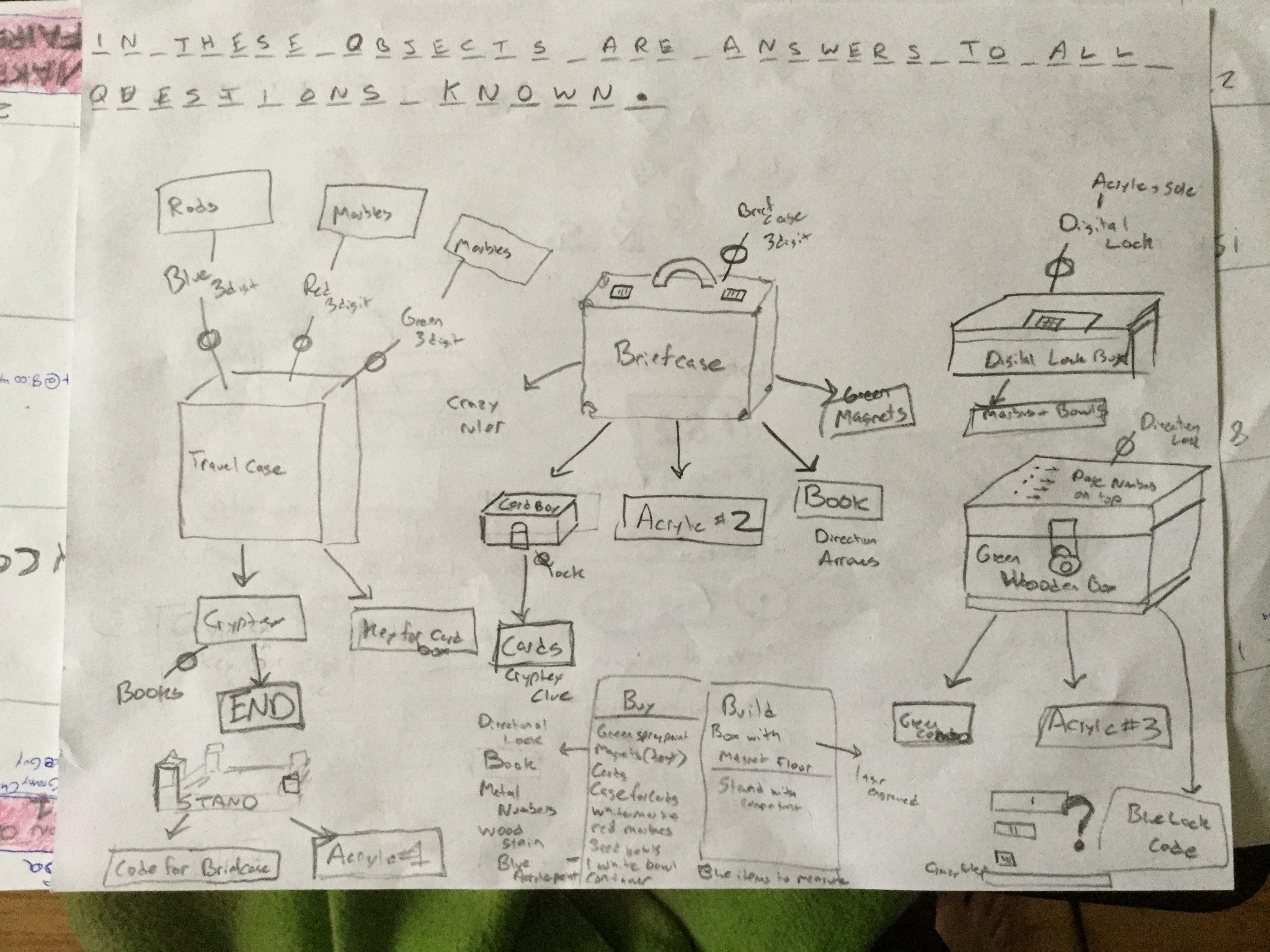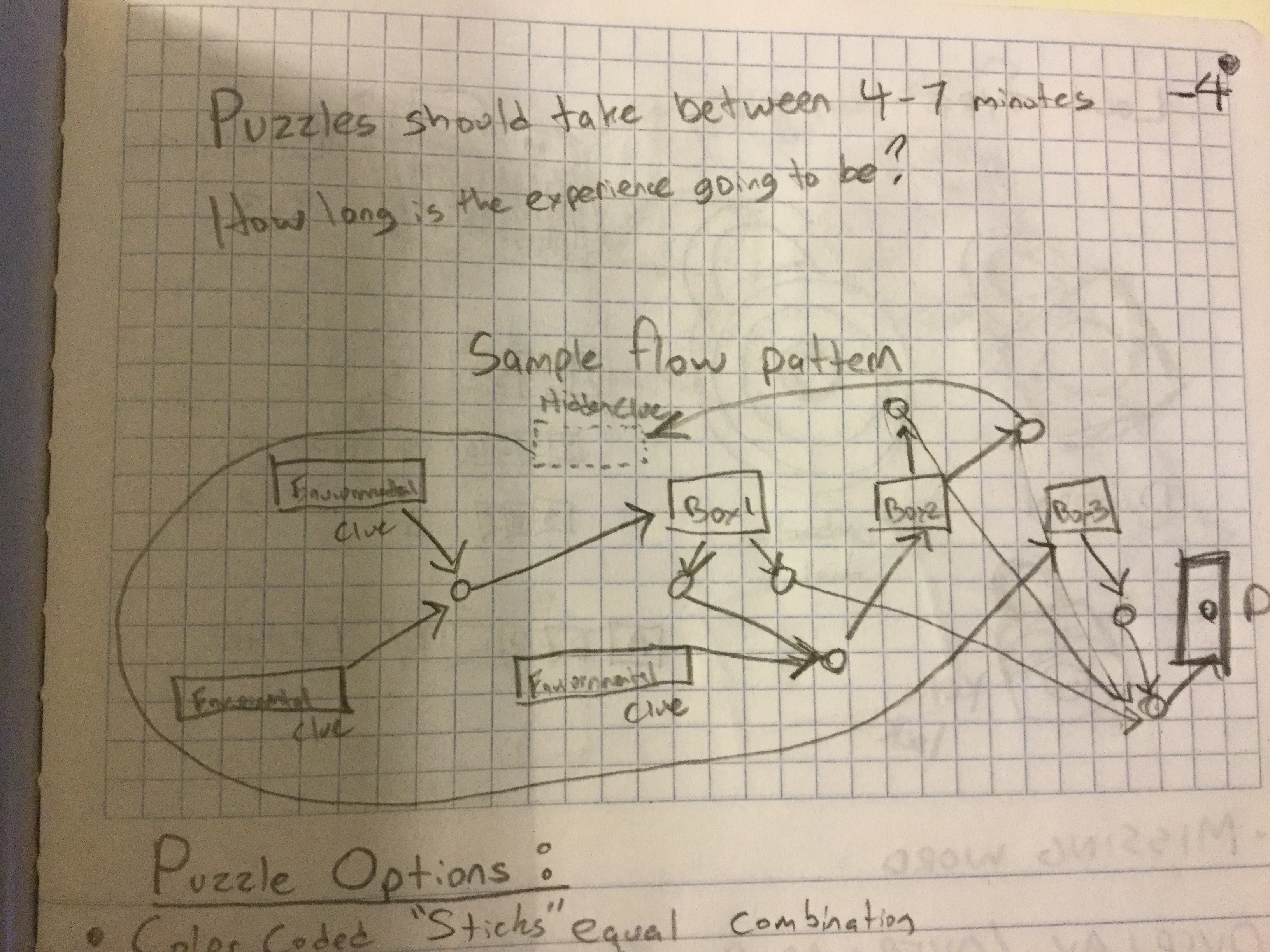-
Everything built and ready for testing!
04/22/2018 at 00:17 • 0 comments![]()
![]()
Blog 4: As of this moment everything has been built! I have been using the maker hub at Elon to print a really smooth cryptex, a case for the deck of cards, three keys that will serve as clues for one of the bike lock puzzles, and a small file that the final “secret code“ will be kept in. I’ve also used the laser engraver to carve a clue into the top of the wooden box that I’ve made specifically for this escape room, as well as several clear pieces of acrylic that will be used in someway to solve two different puzzles.
I was able to order all of the materials I needed very easily, and all of the different puzzles, didn’t have a lot of moving pieces and their interaction was simply intellectual, I did have a lot of trouble with my final puzzle. The one involving the magnets. SPOILERS: essentially I have created a false bottom in the box that I was building. The clue engraved on the top of the box directly ties into how you use the directional lock to open the case. Inside the case our clues to another puzzle. However, embedded inside of the bottom of the case are a series of ceramic magnets arranged to form a three digit code that unlocks one of the bicycle locks around the final case. This puzzle has been extremely challenging for me to find a reasonable way to solve. Using magnets to find the magnets underneath the bottom proved to be impossible, as the magnets outside of the box attracted more to the other magnets rather than the ones inside the box. Simply using pieces of metal prevented the magnet to magnet issues, but it completely lacked any precision needed for identifying numbers hidden out of sight. I started using iron powder as a way of identifying the numbers, but there was no way I could make that unstick from a magnet under the box without specific instructions to the puzzle solver. Once again, my wonderful wife, suggested using an EM field detection sheet, to identify the magnets. It is fantastic. There is no hint that the magnets are there except for the color of the sheet and the color of the wood. The EM detection sheet works perfectly every time!
Connected with this blog post will be a number of images of the elements of my escape room. For obvious reasons I will not be showing how they connect together, but, if you were interested in attempting this, come to the Burlington maker fair April 28, 2018.
-
Design completed!
04/22/2018 at 00:02 • 0 commentsBlog 3: after spinning my wheels for several days, it was my wife’s suggestion of purchasing some multi colored bike locks at The Dollar Tree that finally sent me in the correct direction for how I was going to create this escape room. I have now been able to design a series of puzzles that center around four boxes that include a puzzle that involves counting, a puzzle that involves figuring out what certain numbers mean, creative organization of a deck of cards, using color-coded clues to identify which pieces along with which puzzles, and finally opening three different bike locks around a very nice case to solve a cryptex. The picture that I have is the current flow that I will be using for my escape room. Does include spoilers, so be forewarned. My last puzzle, and arguably the most complicated puzzle (The one that I have not fully determined how I’m going to get done), will involve magnets in someway. If each of the puzzles gets solved within 4 to 7 minutes, the participants should be able to get out of the room within 45 minutes. I don’t know if they’re particularly complicated, the cart one is a little time-consuming, as is the puzzle to open the directional lock, but I think it will be handled.
![]()
-
Prototyping and Goal Modification
04/21/2018 at 23:50 • 0 comments![]()
Blog 2: Unfortunately I have not been able to keep up with my blog posting to the degree that I would like. However, I would like to continue the analysis of the work and my thought processes as I move through this project. At the time of the writing of this post and the next 2, I have completed my first escape room and will be collecting data through testing on you on students during the maker take over on April 25, 2018 and the Burlington maker fair on Saturday, April 28, 2018.
As I stated in my previous blog post, The central problem that I have in developing this escape room is that I need a way to add curriculum focus into these puzzles that will both allow for the focus to be modified to suit the needs of the teacher and their curriculum and also make sure that the puzzles are not a glorified worksheet where the student will check their work by opening up a lock. After having a discussion with my peer group, colleagues, and mentors for this project, I’ve made the decision to relax the hard curricular focus on these puzzles, and focus on creating challenging puzzles that will help the students that do them foster critical thinking skills as well as establish a group dynamics building experience.
Moving into the Prototyping class as provided by the KickBox that Elon sponsors (which allowed me the resources to complete this project), I truly have no idea what it is that I’m going to be building and designing. Our coordinator, Dan, showed us the value of very cheap prototyping Using paper or cardboard allowed us to see flaws in a design before committing time and resources into barking up the wrong tree. This was valuable as it gave me a good opportunity to figure out the source of puzzles that I would need to use and it gave me a little bit of data from my fellow KickBoxers about the best way to proceed with certain puzzles. By the end of the class I had decided on a design flow for my escape room. This flow would allow for elements of puzzles to be discovered progressively and would not be able to be completed until the participant had gotten to be final puzzle. They would have to use clue elements that they did not understand, that they found in the previous puzzles, to solve the final puzzle.
From this point the challenge that lay ahead of me was deciding on what puzzles I would like to use and to figure out the flow from one to the next.
-
Goals and challenges
02/14/2018 at 22:52 • 0 commentsHack a Day blog post 1
My goal with this project is to be able to create an escape room experience for several different populations of elementary school students. I have identified some needs for the project to be successful as well as some major challenge/obstacles.
The five areas that I will need to focus on during this project are:
Structures - The actual construction and design of the puzzles, locks, boxes and how they interact
Curriculum Links - The curriculum focus in the puzzles or in the way that ‘codes and keys’ are discovered and used during the puzzles.
Portability- The ability in which the escape room can be packed into a tub and then unloaded and set up in a space. (This concern is a subset of the Structure issue)
Adaptability - How easily a puzzle can have its solution, or the pieces that provide the solution, replaced with material that is curricularly appropriate for the different population of students that will use the escape room.
Story - The theme of the escape room (This is a subset of the adaptability concern and is largely a creative excerise. As such, this will not this will not likely be a major focus of this project during this initial phase.
Given the above as the elements that I need to be aware of, it is going to be necessary for me to prioritize what is important. Is the ‘coolness’ of the puzzle going to be the primary focus, or is a student’s knowledge of the curriculum going to be the key to opening certain locks? Additionally how baked into the puzzle will the curriculum be? How far away from curriculum can I move before the experience is no longer valid as an in school activity? Yes it could be used as a reward for students, and the benefits of critical thinking, group dynamics, leadership, and abstract thought are obvious (especially for the AG student) but where is the line between relevant / significant and fun.
Educational Escape Room
I am designing an escape room for elementary school students that is semi--modular and curriculum linked.
 Chuck Buckley
Chuck Buckley


